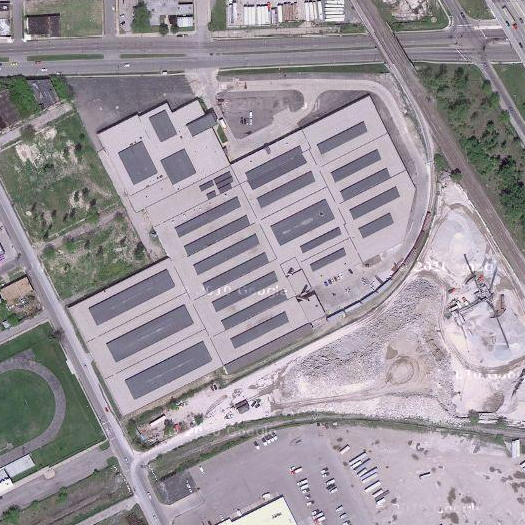
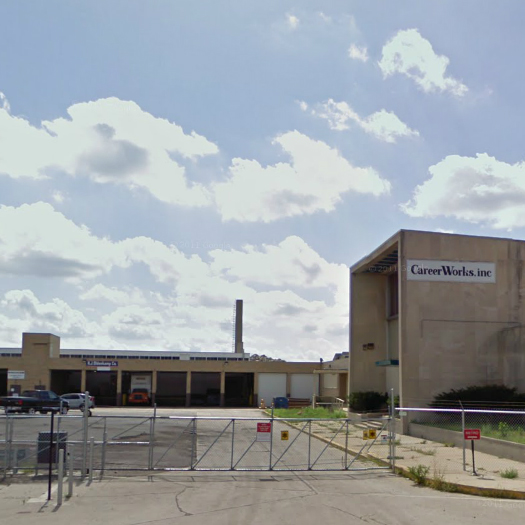
[Warehouse at 1200 E McNichols Road, Highland Park, Michigan. The small red sign at the bottom right corner of the second image says “Metro”.]
The warehouse above — and a network of others like it, scattered around the industrial abandonia of Detroit — is a crucial bottleneck in the global aluminium trade.
Before I explain how this is, though, a bit of background.
2 One of the things that makes that corporeality important is that, while much of the systemic perversity of financialization — like, say, the creation of synthetic CDOs — is intentionally obscure, the perversity of the landscapes that arise from financialization is often obvious, as the case of Metro International Trade Services will, I think, make clear.
3 Alexis Madrigal (author of the linked “flash crash” articles) also wrote about a similar case of “bizarre robot traders”:
“Mysterious and possibly nefarious trading algorithms are operating every minute of every day in the nation’s stock exchanges.
What they do doesn’t show up in Google Finance, let alone in the pages of the Wall Street Journal. No one really knows how they operate or why. But over the past few weeks, Nanex, a data services firm has dragged some of the odder algorithm specimens into the light.
The trading bots visualized in the stock charts in this story aren’t doing anything that could be construed to help the market. Unknown entities for unknown reasons are sending thousands of orders a second through the electronic stock exchanges with no intent to actually trade. Often, the buy or sell prices that they are offering are so far from the market price that there’s no way they’d ever be part of a trade. The bots sketch out odd patterns with their orders, leaving patterns in the data that are largely invisible to market participants.”
Something that I’ve become increasingly interested in the past year — and consequently am collecting a series of related items I hope to post — is the physical geography of global financialization1. I think my interest comes from roughly the same place that my interest in the material infrastructure of the internet (and other hertzian spaces) does — recognizing that, like the internet, global financialization is obviously non-corporeal and, at the same time, less obviously but quite importantly corporeal2. (By corporeal in these cases, I mean both sustained by a complex network of physical infrastructures and generating various indirect physical products through influence within economic, social, and political systems). Financialization is also, like the internet, a thing that exists only in aggregate, its behavior governed by the interaction of a myriad of smaller parts which are directed by a multiplicity of potentially conflicting desires. As a consequence, both things — financialization and the internet — have extremely jagged edges, weird dark spots where aggregated lower-level behaviors manifest as bizarre meta-behaviors. As an example, the intersection of those two sets of dark spots is particularly weird: like last May’s “flash crash”, where “a single large sell order executed by a rather crude software program sent the already-stressed market into a downward spiral”, causing the Dow to drop “10 percent in just minutes”3.
But given that my interest is particularly in the moments where those weird behaviors are spatialized, finding form in buildings and landscapes, this post exists, as I suggested earlier, to highlight a specific point in the physical geography of global financialization: the Detroit warehouses of “Metro International Trade Services”.
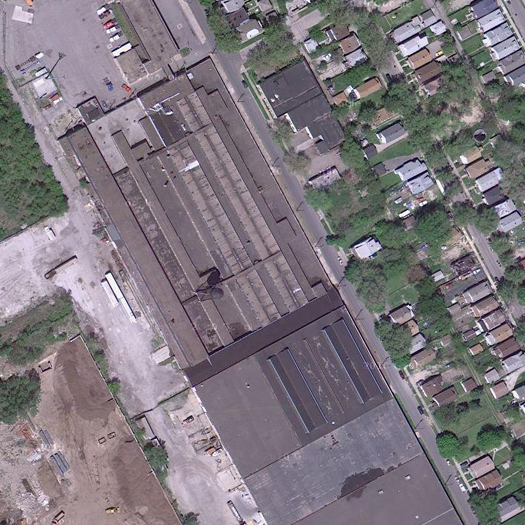
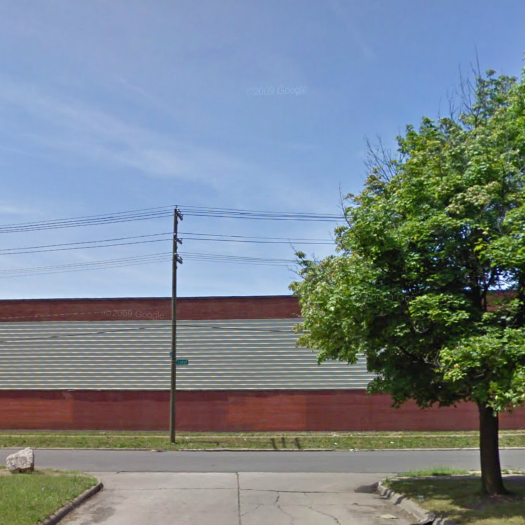
[4815 Cabot Street, Detroit, Michigan.]
I was reminded of this peculiar company by the recent news that big banks — the global players from the financial crisis that are household names, like Goldman Sachs, J.P. Morgan, and Barclay’s — have been threatening to block the sale of a much less widely known organization, the London Metal Exchange. To explain why those banks, which own large shares in the LME, would want to prevent the sale of the London Metal Exchange, you have to understand what Metro International Trade Services is, and something of its materially bizarre business model:
“In a rundown patch of Detroit, enclosed by a cyclone fence and barbed wire, stands an unremarkable warehouse that investment bank Goldman Sachs has transformed into a money-making machine.
The derelict neighborhood off Michigan Avenue is a sharp contrast to Goldman’s bustling skyscraper headquarters near Wall Street, but the two operations share one important element: management by the bank’s savvy financial professionals.
A string of warehouses in Detroit, most of them operated by Goldman, has stockpiled more than a million tonnes of the industrial metal aluminum, about a quarter of global reported inventories.
Simply storing all that metal generates tens of millions of dollars in rental revenues for Goldman every year.”
3 The London Metal Exchange has a simple and legitimate reason for warehousing:
“The LME certifies and regulates the Detroit sheds as part of a global network of more than 640 warehouses. The network is meant to even out swings in volatile metals markets. During recessions, surplus metal can be stored until economies recover and demand picks up, when the metal can be released.”
But — rather problematically — “that function is now being undermined by the backlog in Detroit” — as Goldman Sachs drives up prices by releasing as little metal as it legally can.
So the way that the business model works is essentially this: through its subsidiary Metro International Trade Services, Goldman owns these Detroit warehouses which are stuffed with this vast quantity of aluminum — as the article at Reuters says, more than a million tonnes, a quarter of global inventories. The stuffing, though, is done by the London Metal Exchange3, which owns the metals in the warehouses, and consequently Goldman Sachs ends up making a great deal of money off the rent that the London Metal Exchange pays to Metro International Trade Services — even though Sachs is one of the major owners of the London Metal Exchange. (Goldman bought the warehousing company in 2010, in a wave of purchases of metal warehousing companies by global financial institutions seeking to use the rising price of physical commodities as a hedge against their poor performance in commodity trading.)
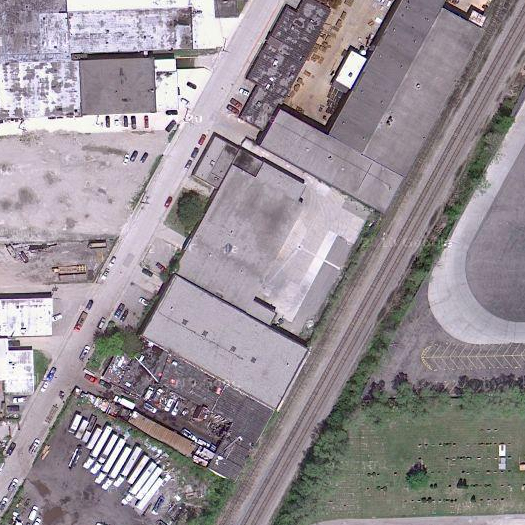
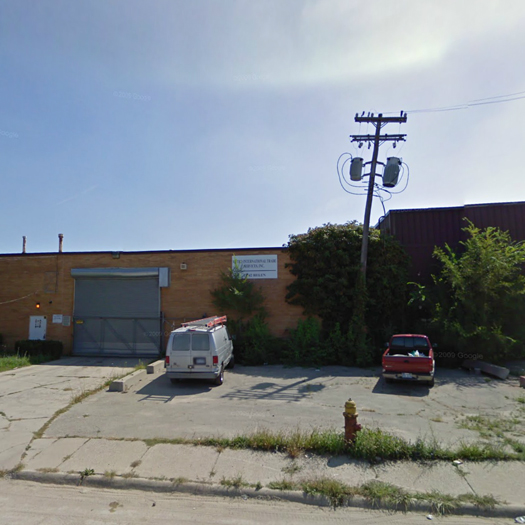
[13542 Helen Street, Detroit, Michigan.]
Meanwhile, as Goldman is collecting huge rents from the London Metal Exchange off its stockpile of aluminum, American aluminum buyers are starved of the metal they want to purchase:
The long delays in metal delivery have buyers fuming. Some consumers are waiting up to a year to receive the aluminum they need and that has resulted in the perverse situation of higher prices at a time when the world is awash in the metal.
“It’s driving up costs for the consumers in North America and it’s not being driven up because there is a true shortage in the market. It’s because of an issue of accessing metal … in Detroit warehouses,” said Nick Madden, chief procurement officer for Atlanta-based Novelis, which is owned by India’s Hindalco Industries Ltd and is the world’s biggest maker of rolled aluminum products. Novelis buys aluminum directly from producers but is still hit by the higher prices.
Madden estimates that the U.S. benchmark physical aluminum price is $20 to $40 a tonne higher because of the backlog at the Detroit warehouses. The physical price is currently around $2,800 per tonne. That premium is forcing U.S. businesses to fork out millions of dollars more for the 6 million tonnes of aluminum they use annually.
But, because of an archaic rule system under which the London Metal Exchange specifics minimum daily metal release requirements by the city rather than by the warehouse (“at the moment, a warehouse operator needs to deliver just 1,500 tonnes a day per city, whether it owns one warehouse there or dozens”), Goldman has every incentive to concentrate the physical position of the aluminum it is storing in a single city — Detroit. This is because the less metal is released, the more money Goldman makes, primarily off the rent on its warehouses, but also potentially on the commodities exchange4. On the other end, the London Metal Exchange gets a one percent take of all rents in all the warehouses it approves, which hardly incentivizes the Exchange to adjust its release rules, even failing to account for the fact that Goldman owns a large portion of the Exchange.
And that’s why a quarter of the world’s supply of “available aluminum” is sitting in warehouses in Detroit, warehouses which are “a whirl of activity in the early hours of the morning when metal is usually delivered for storage”, but deserted throughout the rest of the day — because the aluminum goes in, but it only very slowly comes back out.
[I originally came across the story of Metro International Trade Services in this post by Umair Haque.]


I am also fascinated by the implications of living in this post flash-crash era and look forward to further posts by you on the “physical geography of global financialization.”
Sachs literally sitting on all of the aluminum is ridiculously, ridiculously cray-cray. Why isn’t a greater ruckus being made about this?
Why isn’t a greater ruckus being made about this?
I’d guess that part of it is the incrementality of what is being done — the aluminum price might be up $20 to $40 a tonne, but that’s on a price of $2,800 per tonne, so it’s something like a percentage point.
It’s perfectly symptomatic of how financialization operates, though: a percentage point off every transaction, and suddenly vast sums of wealth are being diverted into these weird corners of the financial system.
Rob – this is a great example of what Manuel Delanda terms, following Braudel I believe, the anti-market. Material goods being manipulated for financial gain, to the detriment of the actual market. Question though: why Detroit? What factors contributed to making it a key node in the flows of the global aluminum trade?
Why Detroit?
That is the obvious question. Can’t say I’ve put any work into answering it, but my first hypothesis would be that it has to do with either (a) the availability of cheap warehouse space (your profits from rents being greater the less you spend to acquire the thing you are renting out, in this case warehouse space) or (b) some historical condition producing a pre-existing concentration of metals warehouses in Detroit (like manufacturing industries that are hungry for raw metals). Actually, maybe both of those things are likely? The typical signage on the MITS warehouses (provisional, small, hasty) implies to me the warehouses weren’t built for MITS, but rather commandeered by it.
Like the term anti-market — that’s exactly what this is. A spatial counter-argument to the typical argument that the hyper-complexity of the financial sector is necessary to lubricate the greater mechanism of capitalist efficiency.
[…] of the geography of financialization, Alex Schafran had a fantastic post at Polis last December on race, foreclosure, and rhetoric […]
[…] 2. CRASHES A series of talks that I’ve listened to in the past year also helped frame these problems for me. The first is an interview on Terragrams with Case Brown, currently of P-REX; the second, Kazys Varnelis’s “A Manifesto for Looseness”; and the third, Kevin Slavin’s “Those algorithms that govern our lives” (or, the somewhat shorter TED version, “How algorithms shape our world”). To explain how they’re relevant to the set of problems within landscape design I’m after, I think it’s best to take them in reverse order. [1] The last time I mentioned Slavin’s talk, it was with an interest in both of these effects, or maybe the point at which these two effects intersect, as I described my interest in the physical geography of global financialization. […]